#Black Sea bottlenose dolphin
Explore tagged Tumblr posts
Photo


“Faces from the Black Sea”
A series of drawings I started in 2018 and, of course, never continued. The idea was to practice my pencil work through several photo studies of Black Sea bottlenose dolphins. They have the most beautiful faces and markings, so a lovely subject for a study series like this. Alas, something or another came along and it never got further than these two drawings. Even though they’re older works I still very much like them! And I hope you will, too.
The original photograph references are here and here.
#drawings#Common bottlenose dolphin#Black Sea bottlenose dolphin#Black Sea#bottlenose#dolphin#Tursiops truncatuc ponticus#Tursiops truncatus#Tursiops#traditional art
89 notes
·
View notes
Text
Below are 10 Wikipedia featured articles. Links and descriptions are below the cut.
The American paddlefish (Polyodon spathula), also known as a Mississippi paddlefish, spoon-billed cat, or spoonbill, is a species of ray-finned fish. It is the last living species of paddlefish (Polyodontidae). This family is most closely related to the sturgeons; together they make up the order Acipenseriformes, which are one of the most primitive living groups of ray-finned fish. Fossil records of other paddlefish species date back 125 million years to the Early Cretaceous, with records of Polyodon extending back 65 million years to the early Paleocene. The American paddlefish is a smooth-skinned freshwater fish with an almost entirely cartilaginous skeleton and a paddle-shaped rostrum (snout), which extends nearly one-third its body length. It has been referred to as a freshwater shark because of its heterocercal tail or caudal fin resembling that of sharks, though it is not closely related. The American paddlefish is a highly derived fish because it has evolved specialised adaptations such as filter feeding. Its rostrum and cranium are covered with tens of thousands of sensory receptors for locating swarms of zooplankton, its primary food source.
The fauna of Scotland is generally typical of the northwest European part of the Palearctic realm, although several of the country's larger mammals were hunted to extinction in historic times and human activity has also led to various species of wildlife being introduced. Scotland's diverse temperate environments support 62 species of wild mammals, including a population of wild cats, important numbers of grey and harbour seals and the most northerly colony of bottlenose dolphins in the world. Many populations of moorland birds, including the black and red grouse, live here, and the country has internationally significant nesting grounds for seabirds such as the northern gannet. The Scottish crossbill is the only endemic vertebrate species in the UK. Scotland's seas are among the most biologically productive in the world; it is estimated that the total number of Scottish marine species exceeds 40,000. The Darwin Mounds are an important area of deep sea cold water coral reefs discovered in 1998. Only six amphibians and four land reptiles are native to Scotland, but many species of invertebrates live there that are otherwise rare in the United Kingdom.
Several attempts at a Franco-Mongol alliance against the Islamic caliphates, their common enemy, were made by various leaders among the Frankish Crusaders and the Mongol Empire in the 13th century. Such an alliance might have seemed an obvious choice: the Mongols were already sympathetic to Christianity, given the presence of many influential Nestorian Christians in the Mongol court. The Franks—Western Europeans, and those in the Levantine Crusader states—were open to the idea of support from the East, in part owing to the long-running legend of the mythical Prester John, an Eastern king in an Eastern kingdom who many believed would one day come to the assistance of the Crusaders in the Holy Land. The Franks and Mongols also shared a common enemy in the Muslims. However, despite many messages, gifts, and emissaries over the course of several decades, the often-proposed alliance never came to fruition.
The Free State of Galveston (sometimes referred to as the Republic of Galveston Island) was a satirical name given to the coastal city of Galveston in the U.S. state of Texas during the early-to-mid-20th century. Today, the term is sometimes used to describe the culture and history of that era. During the Roaring Twenties, Galveston Island emerged as a popular resort town, attracting celebrities from around the country. Gambling, illegal liquor, and other vice-oriented businesses were a major part of tourism. The "Free State" moniker embodied a belief held by many locals that Galveston was beyond what they perceived were repressive mores and laws of Texas and the United States. In one of the more famous examples of this, a state committee, investigating gambling at the fabled Balinese Room, was told by the local sheriff that he had not raided the establishment because it was a "private club" and because he was not a "member".
The Kylfings (Old Norse Kylfingar; Estonian Kalevid; Hungarian Kölpények; Old East Slavic Колбяги, Kolbiagi; Byzantine Greek Κουλπίγγοι, Koulpingoi; Arabic al-Kilabiyya) were a people of uncertain origin active in Northern Europe during the Viking Age, roughly from the late ninth century to the early twelfth century. They could be found in areas of Lapland, Russia, and the Byzantine Empire that were frequented by Scandinavian traders, raiders and mercenaries. Scholars differ on whether the Kylfings were ethnically Finnic or Norse. Also disputed is their geographic origin, with Denmark, Sweden and the Eastern Baltic all put forward as candidates. Whether the name Kylfing denotes a particular tribal, socio-political, or economic grouping is also a matter of much debate.
Mosasaurus (/ˌmoʊzəˈsɔːrəs/; "lizard of the Meuse River") is the type genus (defining example) of the mosasaurs, an extinct group of aquatic squamate reptiles. It lived from about 82 to 66 million years ago during the Campanian and Maastrichtian stages of the Late Cretaceous. The genus was one of the first Mesozoic marine reptiles known to science—the first fossils of Mosasaurus were found as skulls in a chalk quarry near the Dutch city of Maastricht in the late 18th century, and were initially thought to be crocodiles or whales. One skull discovered around 1780 was famously nicknamed the "great animal of Maastricht". In 1808, naturalist Georges Cuvier concluded that it belonged to a giant marine lizard with similarities to monitor lizards but otherwise unlike any known living animal. This concept was revolutionary at the time and helped support the then-developing ideas of extinction.
Several organisms are capable of rolling locomotion. However, true wheels and propellers—despite their utility in human vehicles—do not play a significant role in the movement of living things (with the exception of certain flagella, which work like corkscrews). Biologists have offered several explanations for the apparent absence of biological wheels, and wheeled creatures have appeared often in speculative fiction.
The existence of a slate industry in Wales is attested since the Roman period, when slate was used to roof the fort at Segontium, now Caernarfon. The slate industry grew slowly until the early 18th century, then rapidly during the Industrial Revolution in Wales until the late 19th century, at which time the most important slate producing areas were in northwest Wales. These sites included the Penrhyn Quarry near Bethesda, the Dinorwic Quarry near Llanberis, the Nantlle Valley quarries, and Blaenau Ffestiniog, where the slate was mined rather than quarried. Penrhyn and Dinorwig were the two largest slate quarries in the world, and the Oakeley mine at Blaenau Ffestiniog was the largest slate mine in the world.
The social history of viruses describes the influence of viruses and viral infections on human history. Epidemics caused by viruses began when human behaviour changed during the Neolithic period, around 12,000 years ago, when humans developed more densely populated agricultural communities. This allowed viruses to spread rapidly and subsequently to become endemic. Viruses of plants and livestock also increased, and as humans became dependent on agriculture and farming, diseases such as potyviruses of potatoes and rinderpest of cattle had devastating consequences.
The High Middle Ages of Scotland encompass Scotland in the era between the death of Domnall II in 900 AD and the death of King Alexander III in 1286, which was an indirect cause of the Wars of Scottish Independence. At the close of the ninth century, various competing kingdoms occupied the territory of modern Scotland. Scandinavian influence was dominant in the northern and western islands, Brythonic culture in the southwest, the Anglo-Saxon or English Kingdom of Northumbria in the southeast and the Pictish and Gaelic Kingdom of Alba in the east, north of the River Forth. By the tenth and eleventh centuries, northern Great Britain was increasingly dominated by Gaelic culture, and by the Gaelic regal lordship of Alba, known in Latin as either Albania or Scotia, and in English as "Scotland".
29 notes
·
View notes
Text











A look back on my 2024: Part 2 of 3-Mammals, dragonflies and damselflies, beetles and others
Another very strong mammalian year in which I saw my highest ever amount of species in a year centred on adorable Red Squirrels as I was lucky to observe them in Scotland and on Brownsea Island. Scotland was an incredible time with so many mammals observed; Stoat and Brown Hare adding to the magic of the wild cottage with lots of wildlife around to see that we stayed in and simply breathtaking wild experiences watching Bottlenose Dolphins on the Moray coast and a Mountain Hare in the Highlands. Roe Deer at the cottage and Red Deer during the week were other highlights with both species key to my year overall with amazing local Roe Deer views and the Bushy Park Red Deer and Fallow Deer experience which was great again in September. I had an amazing year for Stoats seeing two at Rutland Water in July as well and as my fortunes of seeing these species has taken an upturn the past year and a half we got fantastic Weasel views at Bempton Cliffs. We saw Field Voles really well there and got exceptional immersive views of Grey Seals at Flamborough Head. It was a splendid seal year with superb views of Common Seals on the Beaulieu River and in Newtown Harbour on the Isle of Wight on a boat trip in a strong run of mammals standing out in September. A Water Shrew was a surprise first for me as I waded through a flooded path at RSPB Radipole Lake in January and I was overjoyed to see a Water Vole at Rutland Water. Closer to home Fallow Deer and Sika Deer have been great to see in Hampshire and Dorset, with impressive home views of Hedgehogs and I had a magical year of observing beautiful Foxes with top sightings at Southsea and Hook-with-Warsash.
Perhaps unexpectedly again with similar to butterflies as mentioned in my last post a few species I really needed to work for this year I saw my highest ever amount of dragonflies and damselflies this year. It was a green dream for odonata in 2024 with a big moment seeing my first ever Downy Emerald dragonfly at Bentley Wood in May and both Emerald Damselfly and Willow Emerald Damselfly seen at Thurley and Fishlake Meadows respectively. Common, Ruddy and Black Darter gave me thrilling moments this year as did Black-tailed Skimmer with an especially good view of a female at Testwood Lakes and Keeled Skimmer. I was captivated by watching Golden-ringed Dragonflies at Winnall Moors, Testwood Lakes and Fen Bog Nature Reserve. Hawkers owned the summer with a strong couple of months or so seeing Migrant Hawkers and Southern Hawker and Brown Hawker enjoyed too. Azure, Blue-tailed and Large Red Damselflies were also very pleasant to see.
Beetles I suppose took another step up in importance for me this year as I kept a year list of ones I could identify for the first time ever recording twenty species. Green Immigrant Leaf Weevil, Violet Oil Beetle, Bloody-nosed Beetle, Tawny Longhorn beetle and Devil’s Coach Horse Beetle were some of my favourite finds. Once again cantharis rustic soldier beetle, Common Red Soldier beetle, Red-headed Cardinal beetle, Black-and-yellow Longhorn beetle, Swollen-thighed beetle and treasured views of epic Green Tiger Beetles at Bentley Wood in my home area, Strathdearn in Scotland and Fen Bog Nature Reserve in Yorkshire brough vibrant colour to my spring and summer. Dor beetles, ladybirds, Garden Chafer Beetle and Common Malachite Beetle were more delights seen this year.
Some other key species of my year included fascinating Hornet Mimic Hoverfly and Lesser Hornet Hoverfly in the summer, Marmalade Hoverfly, a notable amount of Common Lizards in the summer, frogs and frogspawn, the indomitable Long-winged Conehead one of my key crickets/grasshoppers of the year at Lakeside and Milford on Sea, Mottled shieldbugs, Dock bug, Forest bug, Grey Silverfish and spiders including Long-bodied Cellar spiders at home, lots of snails enjoyed at home and a fascinating Ambersnail seen at Winnall Moors in the summer.
The photos in this set are of; Keeled Skimmer dragonfly at Brownsea Island in September, Common Darter dragonfly at Lakeside in August, Willow Emerald Damselfly at Fishlake Meadows in October, Red Squirrel on Brownsea Island in September, Stoat at Rutland Water in July, Garden Chafer beetle at Magdalen Hill Down in May, Tawny Longhorn beetle on scabious at Shipton Bellinger in August, Hornet Mimic hoverfly at Stockbridge Down and Ambersnail at Winnall Moors in August, Fallow Deer in the New Forest on Good Friday and Long-winged Conehead at Lakeside in August.
#dragonflies#damselflies#beetles#mammals#red squirrel#common seal#grey seal#migrant hawker#downy emerald#bottlenose dolphin#dock bug#outdoors#macro#willow emerald damselfly#nature#walking#england#scotland#uk#world#moray#highlands#brown hare#mountain hare#stoat#europe#britain#wildlife#photography#wildlife photography
8 notes
·
View notes
Text


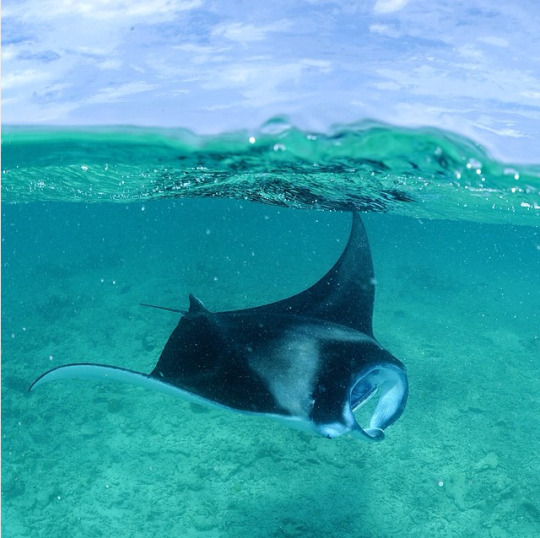
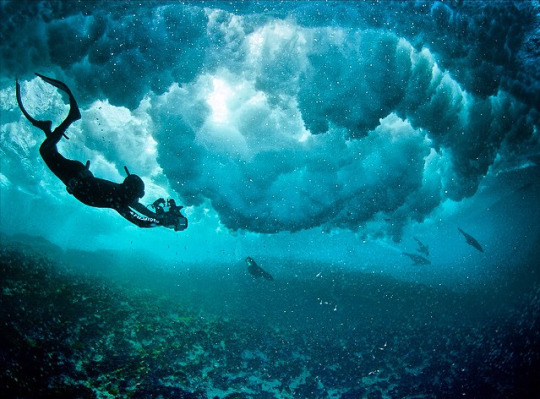
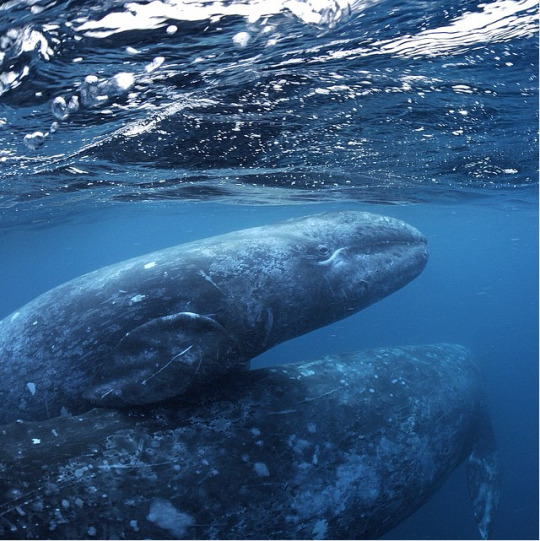
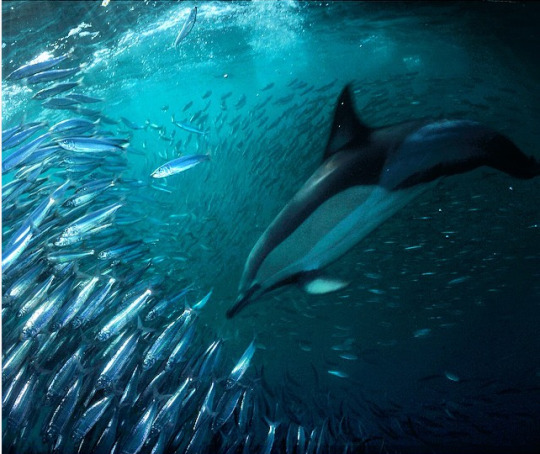

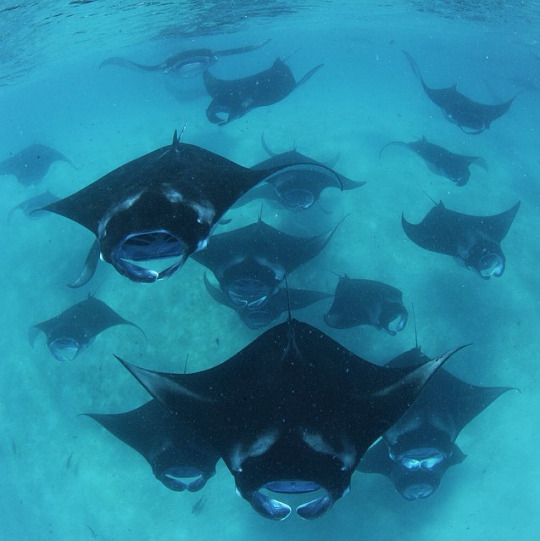
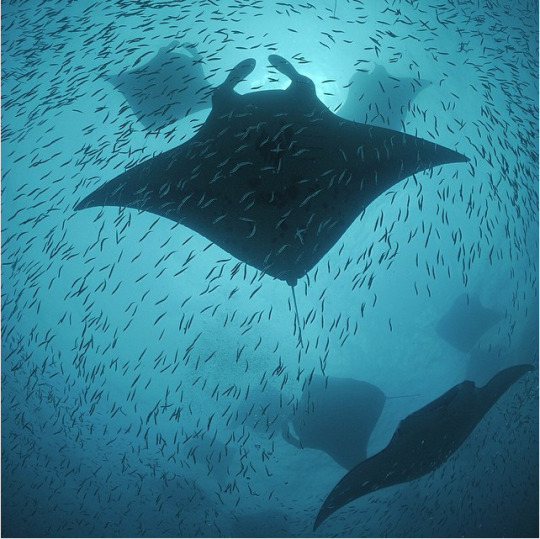
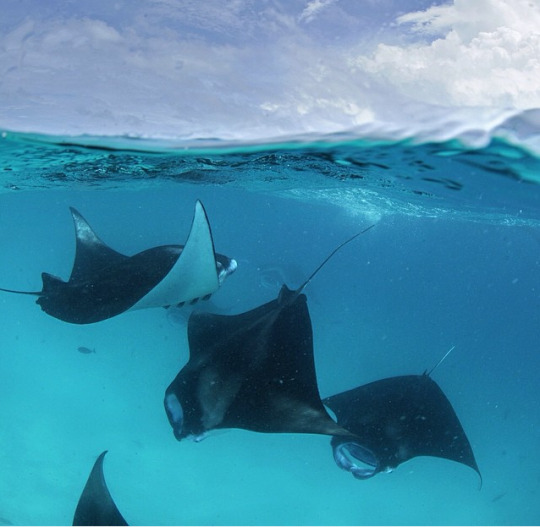

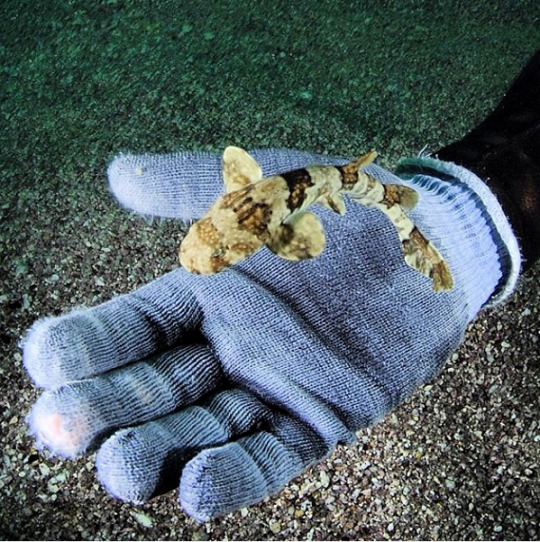
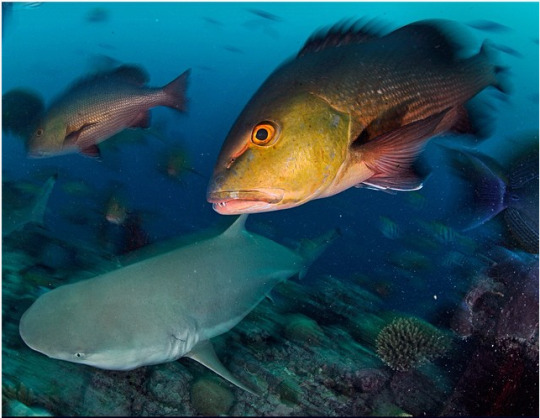
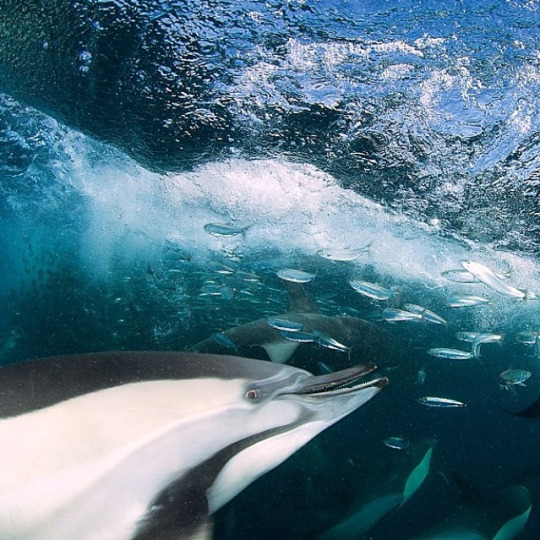

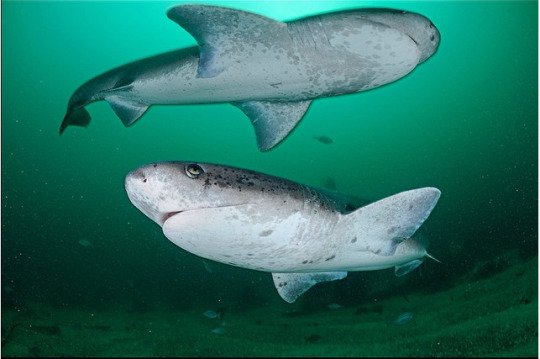
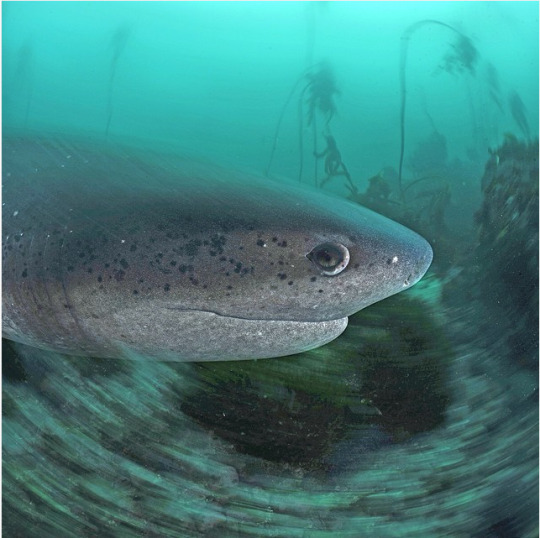
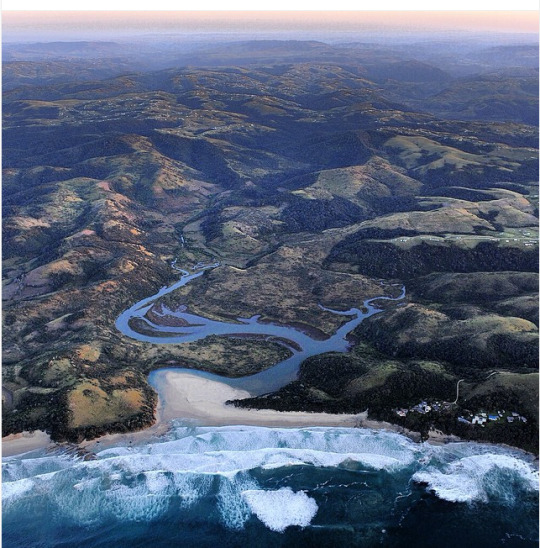

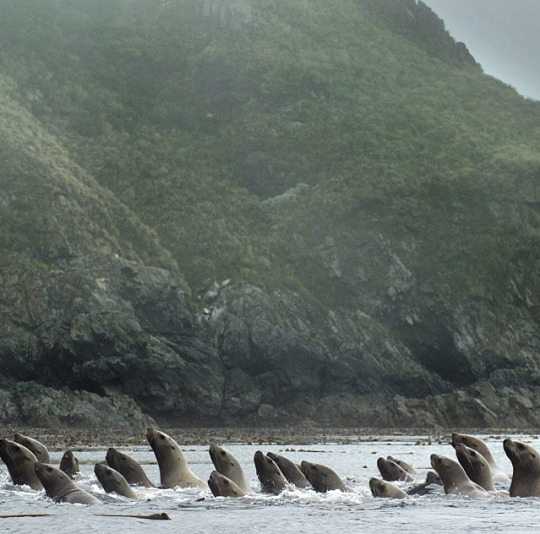
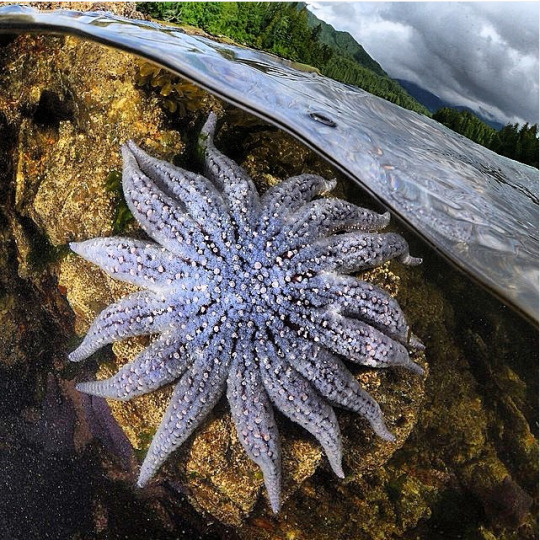
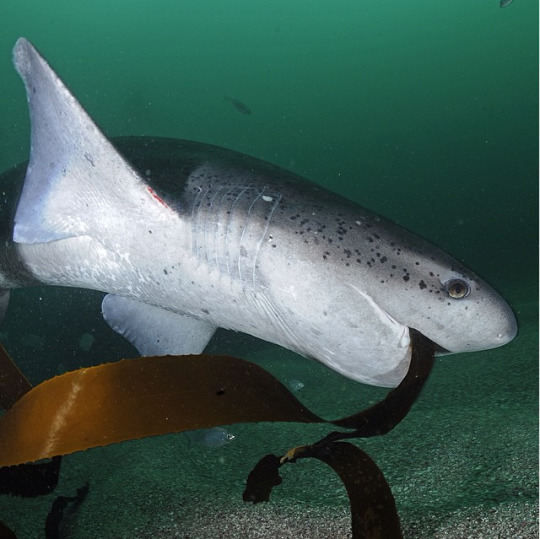
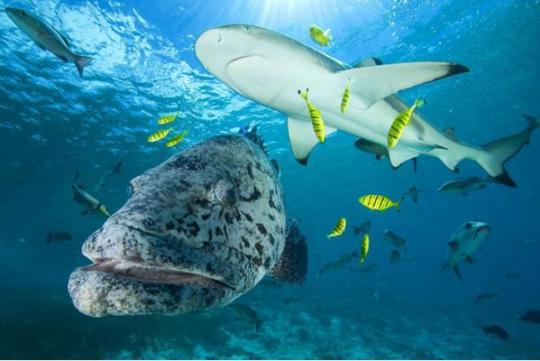
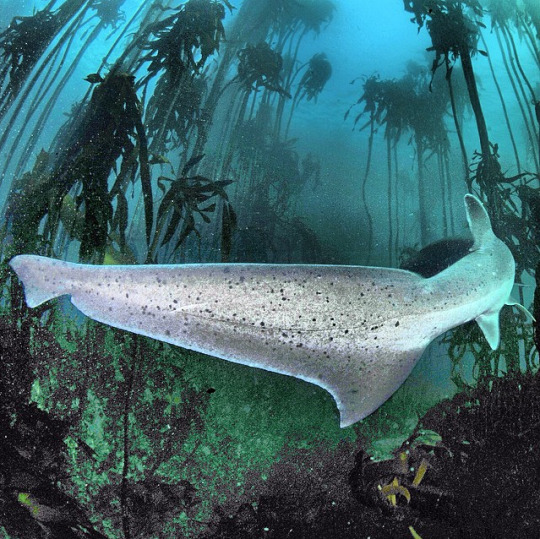
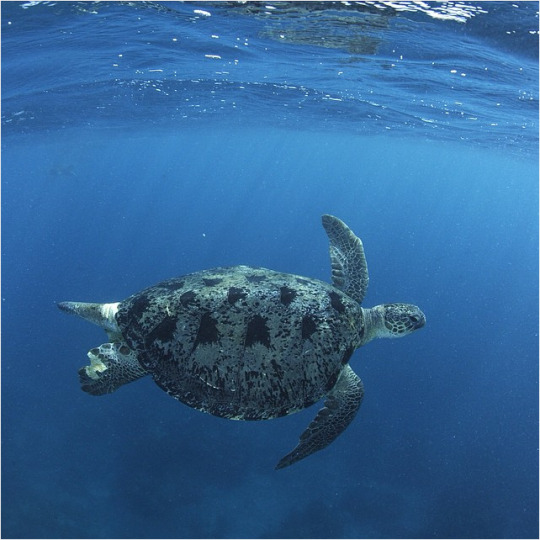
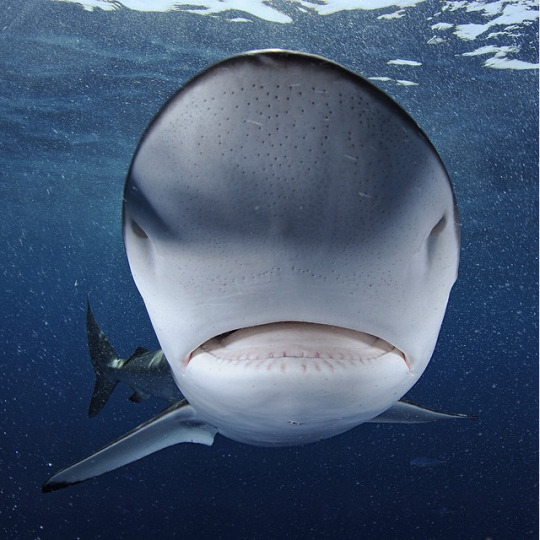
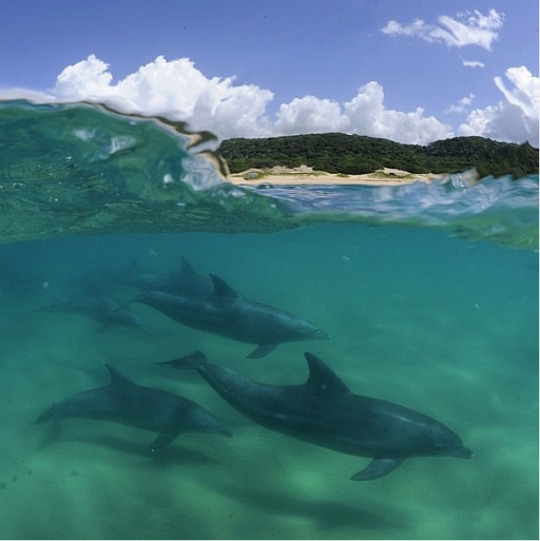
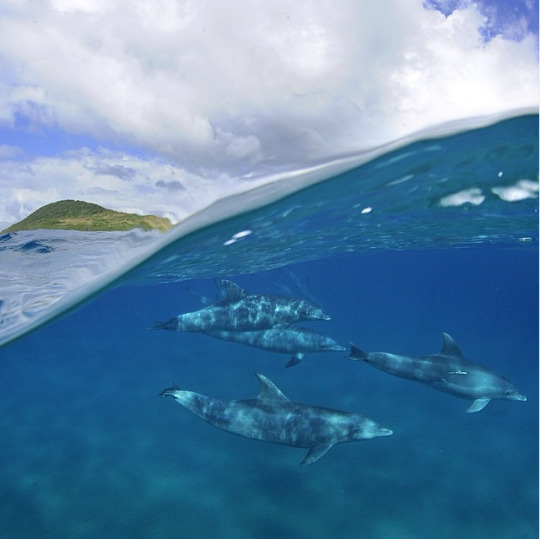

Photos and text: @thomaspeschak
1-. A blacktip reef shark navigates a narrow canyon off Aldabra Atoll. Seychelles
2-. Every winter sub-adult whale shark gather in the seas off Djibouti
3-. Hanifaru Bay in the Maldives
4-. I had been watching these seals for years & wanted to photograph them surfing a unique underwater perspective on southern African marine reserves
5-. In Mexico's San Ignacio lagoon a gray whale mother pushes it's young calf to the surface so it can get a better look at the photographer
6-. June-July is sardine run time off South Africa's East Coast. Long-beaked common dolphins are the only predators that hunt cooperatively
7-. Kira is a black labrator that loves swimming with dolphins
8-. Manta rays. Hanifaru Bay in the Maldives
9-. Mantas feeding amongst baifsish. Hanifaru Bay
10-. Reef mantas feeding at Hanifaru Marine Reserve
11-. My fascination with seahorses began more than 10 years ago when I still was a graduate student in marine biology
12-. Not all sharks look like Jaws. An endemic Puffader shy shark hovers above dive guide hand
13-. Sharks, Bohar snapper and other predatory fish are abundant on the fringing coral reefs of the seas around D'Arros Island and St. Joseph Atoll, Seychelles
14-. Long beaked common dolphin hunting sardines off South Africa's Wild Coast
15-. South African free diver @hanlinprinsloo diving with blacktip sharks in the Aliwal Shoal Marine Protected Area
16-. y 17-. South Africa's Table Mountain Marine Protected Area host a unique sevengil shark aggregation site wich draws divers from all over the world
18-. South Africa's Wild Coast is a mosaic of river mouths, grassy hillsides and formidable sea cliffs
19-. Aerial perspective of the sanctuary zone of the Ponta do Ouro Marine Reserve, Mozambique
20-. Steller's sea lions ar common off Canada's British Colomia coast where populations of their preferred prey such a sand lance and herring are still relatively abundant
21-. Sunflower sea stars are the largest shallow water starfish in the world
22-. The broadnosed sevengill shark is a top predator in South Africa's kelp forests. With saw shaped teeth akin to tiger sharks, they hunt fish and scavenge dead fur seals
23-. The seas around Aldabra atoll are some of the most pristine in the Seychelles and the entire western Indian Ocean
24-. The tail belongs to one of the top predators in South Africa's kelp forest
25-. This green turtle traverses the unbelievably blue waters of Europa Atoll in search of a mate
26-. To survive in the vastness of the open ocean, Silky sharks rely on their boldness and curiosity to investigate every opportunity that might yield a meal
27-. y 28-. This pod of Indo-Pacific Bottlenose dolphins regularly crosses from Mozambican into South African waters
12 notes
·
View notes
Text
It's time for "Cetology" in Whale Weekly!
I do not think this is the longest chapter--chapters 3 and 16 both have more pages in my ebook TOC--but goodness, it sure feels it.
In one of the University of Chicago Press's periodic sales, I purchased Ahab's Rolling Sea: A Natural History of Moby-Dick, by Richard J. King. And it was really helpful when it came to "Cetology," partly for the practical details, but more for the bigger picture, which is:
This pre-dates On the Origin of Species.
As King puts it, it's very easy for us to think about classifications in terms of branches on the tree of evolution, but naturalists at the time Ishmael was writing "saw no branches underneath the leaves." They did have groupings--and Ishmael is deliberately dismissive of the actual good reasons that naturalists had for such groupings--but
Without a clear reason for any classification that convincingly rationalized the choice of skeletal features, visible similarities, behaviors, and/or habitats, Ishmael from his barstool, or more appropriately his capstan above the forecastle, admits befuddlement. He argues, why not simply use size? [...] In light of evolution then, Ishmael’s use of size as a way to classify the whales is simplistic, but in Melville’s time it wasn’t really that much more arbitrary than other organizational schemes.
Moreover, King also points out that by classifying whales as books, Ishmael can bring in ideas "about perception, about interpretation, and about theological exploration, which was often referred to as seeking to read God’s 'Book of Nature.'" And I think that's neat.
("Sulphur bottoms" are blue whales; "black fish" are pilot whales; "Huzza Porpoises" are bottlenose dolphins.)
125 notes
·
View notes
Text



art fight reference sheet adventure
[IMAGE ID, IMAGE 1: Reference sheet of an OC named Toby Miller, an anthropomorphic white fox. Their bio reads: The agender symbol, they/them, 15, 6 foot, fox, low energy, often spaces out, and nonverbal. They wear a blue chullo hat with yellow lightning bolts and swirls for a pattern. The fluff on the top and tips of the hat are yellow as well. They're also wearing a brown sweater with a lighter brown zigzag stripe across the middle and swirls above and below the zigzag, as well as green pants. The pants are drawn as if they're pantyhose with no lines between where the pants stop and shoes begin. Their tail is huge and is almost as tall as their torso. The main drawing shows them just standing there, looking off to the side. They have big eyes, thick black eyebrows, a long snout with a round brown nose at the end, and no visible mouth. Around the main drawing are smaller drawings such as: Toby sitting on the floor with no shoes on, showing that they have paw pads on the bottom of their feet. Toby punching a brick wall so hard the bricks fall out from the other side. Underneath is blue meter that says: attack 180. This is cropped from pokemondb.com. A drawing of Toby carrying a huge cardboard box and they have to look around the box from the side to see. A head shot of Toby angry with a scribble over their head. A drawing of Toby screaming, the only drawing where their mouth is visible and shows off their blue mouth and light blue tongue. A drawing where Toby holds a bug on their finger, their eyebrows raised to show excitement. The final drawing is of Toby wearing a tank top with an ant graphic and shorts with no shoes. This shows off Toby's short triangular ears. There's a few design notes scattered around the sheet, and they read. Mouth is almost never visible, but it exists. Mostly expresses with eyes. And powerful but pure of heart.
IMAGE 2: Reference sheet for an OC named Amber Lloyd. She's a short human with four arms and two bug antennae sticking out from the hole in her backwards baseball cap. She has pale skin and giant square shaped eyes with green irises. Her nose is pink and triangular, similar to a cat's, and has a large birthmark under her right eye. Her hair is long, spiky, and brown, growing down to the middle of her back. She's wearing a backwards baseball cap that's green in the back, yellow in the front, and navy on the brim. A pink bandana around her neck. A dark pink sweater with thin purple stripes. Navy overalls with gold buttons with heart shapes in the middle of the buttons and a pink pocket with a navy heart in the middle. And large brown shoes. Her bio shows the female symbol, 14, 4 foot, tiny, high energy, and aggressive. The main drawing is surrounded by smaller drawings which are: A front view of Amber with her arms sticking out. A headshot of Amber yelling. A drawing of Amber walking. A drawing of Amber without her shoes and a tank top with an ant graphic on it. A drawing of Amber hammering nails onto a wooden board. A drawing of Amber panicked with big round eyes. And lastly, a drawing of Amber without her hat, showing her messy hat hair. Various notes reads: Big stupid feet. Super short legs. Eyes don't have to be squared. And the builder.
IMAGE 3: Reference sheet for an OC named Trixie. It shows both her human and werewolf form. In her human form, she's a short tan woman with a cartoonishly large bulbous nose and thick magenta hair that covers her left eye. She's wearing a green shirt with the NPFA diamond for a graphic, where instead of numbers, the top quadrant is the letter Y, the left is X, the bottom is B, and the right is A. She's also wearing a long blue skirt with white, yellow, and green strips and blue bottlenose dolphin slippers. She's also holding up a dull green smart phone with a sea horse logo on the back. Her werewolf form is three times her size and looks like a large dopey pink poodle. Her werewolf form is drawn only wearing a dark purple short skirt. She has a wide purple nose, some small fangs sticking out from her lips, and one big yellow eye. Her bio reads: the female symbol, 28, five foot one for human, and roughly ten feet for werewolf but that it doesn't super matter, she's just comically big. There are several smaller drawings around the main drawing that are: Werewolf Trixie with an arm sticking out and shaved, showing off both her paw pads, and that her arm fur is really thick. Drawings showing that in both forms, the inside of Trixie's mouth is purple with a light purple tongue. A headshot of human Trixie looking to the side, annoyed with a long drip of mucus coming from her nose. A drawing of human Trixie sitting on the floor with no shoes and 1 big eye. Even in human form, she has paw pads on the bottom of her square feet. A front view drawing of wolf Trixie's head with her eye floating off of it. And a headshot of human Trixie with her hair in a ponytail, showing off her second eye and tiny ears. The notes read: Nose+top lip are one entity. Eye floats depending on angle, but should always anchor here. And secret 2 eyes+ears out version. END ID]
28 notes
·
View notes
Text


Job Occupation: Art Professor
Birth Place: German
Birthday: ???
Sexuality: Lesbian
Pronouns: She/Her
Height: 6'2
Age: ???
Species: Vampire
Personality: Little Strict, Kind, Loyal, Mysterious, Compassionate, Honest, Hard-working, Creative, Smart, Dedicated, Mature, Elegant, Protective, Possessive, Dominant & Sadistic

Favorite Flowers: Black Orchid, Bat Flower, Red Bleeding Heart, Ghost Orchid, Red Roses and Jade Vine
Favorite Animals: Cats(Big & Small), Wolves, Bearded Dragons, Bats(Any), Dwarf Mongoose, Tasmanian Devil, Mediterranean Monk Seal, Philippine Eagle, Pangolin, Cuban Rock Iguana, Tiger Shark, Sea Otter, Bottlenose Dolphin, Orca, Horses, Spider Monkey, Wolverine, Komodo Dragon & Snake(Any)
Favorite Food: Sweet Noodle Kugel and Human Blood
Favorite Fashion Aesthetic: Classic Core, Dark Academia, Cyberpunk, Ancient Egypt, 30s, 50s,70s, 80s, Kingcore, Victorian, Formal, Luxury, Masculine, Rocker & Street
Favorite Movies: Grease, The Sound of Music, Mary Poppins, The Phantom Of The Opera, Charlie's Angels, Maleficent, Midsommar, The Shining, Halloween, All The Scream Movies and Interview With The Vampire
Favorite TV Shows: Game Of Thrones, Horseland, Castlevania, Jujutsu Kaisen, My Hero Academia, Once Upon A Time, Sleepy Hollow, Pretty Little Liars, Charmed(the old one) and The Witcher

Her Cats' Names: Reaper(Black Maine Coon), Flora(Abyssinian), Buttercup(Oriental Shorthair), Mocha(Ragdoll), Rocoso(Norwegian Forest Cat), Jasper(Siamese), Diamond(Egyptian Mau), Roxy(Javanese) & Sugar(Australian Mist)
Her Dogs Names: Shadow (Alexander Archipelago Wolf), Silver(Blue Nosed Pitbull Puppy), Coco(Doberman Puppy) & Luna(Dachshund)
Other Animals Names: Oreo(Bunny) & Winter(Bearded Dragon)

What she looks like:

Her Fashion Aesthetic:
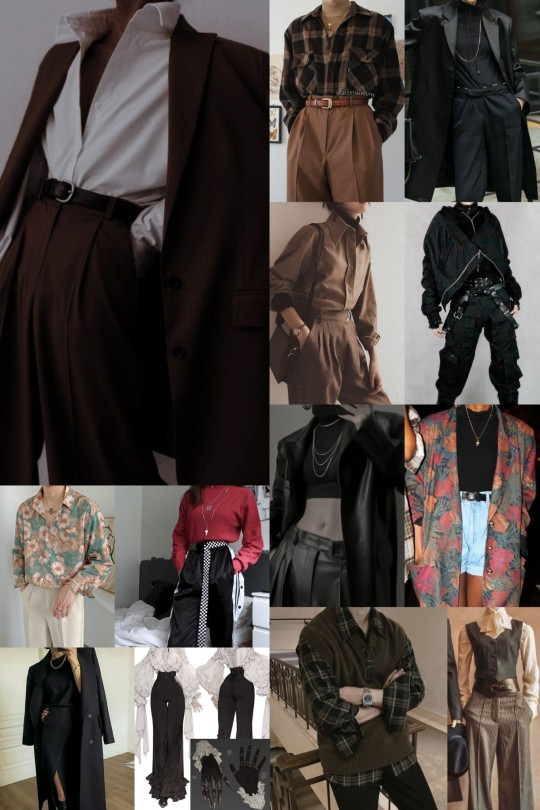
Hairstyles she wears the most:
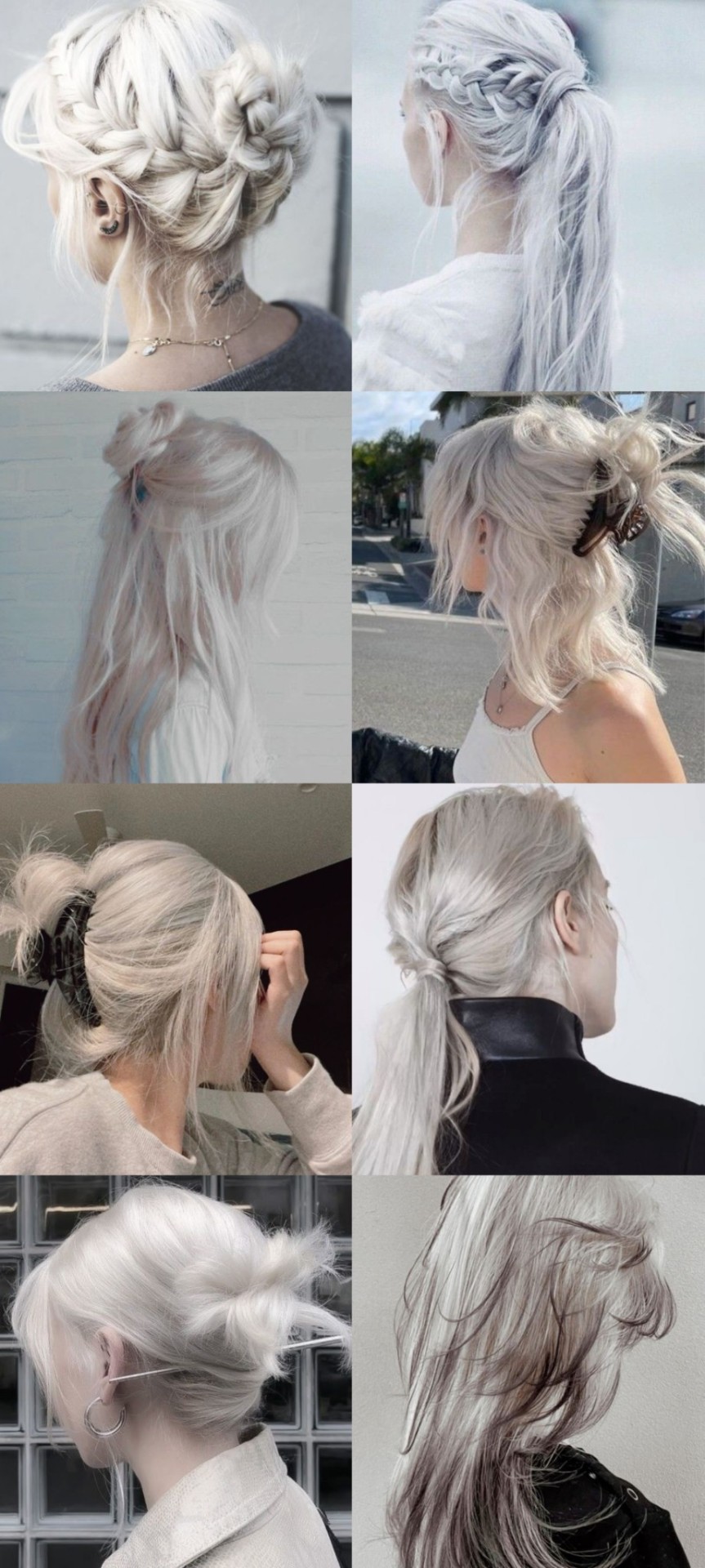
Her Glasses:

Her Nails:
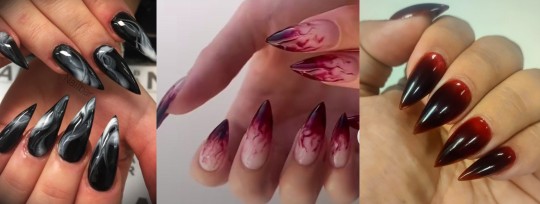
8 notes
·
View notes
Text
WANNA HEAR THIS BATSHIT INSANE AU I CAME uP WITH A COUPLE DAYS AGO?!!
no? TOO BAD! I recently learned about the existence of THESE motherfuckers and my first thought when I saw them was “HOLY SHIT THEY LOOK LIKE AUDREY 2!” They’re called Predatory Tunicates, here ya go

Also I forgot their name briefly and searched up “Transparent crinoid that looks like a venus fly trap” and discovered that the Venus fly trap anenome exists, so maybe that could also be Twoey, either or this isn’t a complete au.

ANyways, so a little before that my brain made ANOTHER connection between Little SHop Of Horrors and marine biology was that dolphins will sometimes beat up pufferfish simply to get high off their venom, aND IF THAT ISN’T EXACTLY WHAT ORIN SCRIVELLO WOULD DO AS A MERMAN THEN I DON’T KNOW WHAT IS!!! (yes, I am aware that Cleaner wrasses also exist, but the difference is that they’re supposed to be good at dentistry and they can’t just go around inflicting pain for funsies because if they do, they’ll get eaten so a dolphin was just more fitting) Also, should Orin be a bottlenose or an Orca? because both of them enjoy tormenting other sea creatures beyond what’s necessary for survival and Orcas are a type of dolphin and the black and white color scheme would be fitting, but I also fon’t know if Orcas can get high off pufferfish venom
Update: research still inconclusive, I’m just gonna say that in this AU where mermaids are real and crinoids make Faustian power bargains, that yes, Orcas can get high off pufferfish venom
With that part out of the way, I guess Seymour should be a pufferfish, and I’m imagining that he just sits there and lets Orin bite him until he ODs on tetrodotoxin instead of nitrous oxide. Alternatively, I could imagine him being a shrimp, would be really funny if somehow a shrimp managed to kill an orca, plus there could be some symbolism or whatever with the size of any given merfolk showing their status, IDK I’m just spitballing.
Mr. Mushnik is gonna be a crab, Because he’s basically already Mr. Krabs, the connection was too obvious.
I actually don’t know what species Audrey would be in this AU, I was maybe thinking Angelfish?
Somehow, I decided to get Arthur Denton involved here just because I remembered that one Drawfee bit about the Kinky Christmas Carp and I just decided that Arthur is gonna be carp SOLELY as a reference to that
The muses are gonna be human Marine researchers who aren’t getting involved in the drama, but do have cameras set up on the ocean floor and commentate over everything they see in song form
#little shop of horrors#little shop of horrors AU#mer au#I guess this sort of counts as my one and only Mermay contribution?#Audrey 2#predatory tunicate#venus fly trap anenome#seymour krelbourne#Orin Scrivello#orca#shrimp#pufferefish#tw: overdose mention#cleaner wrass#Audrey Fulquard#angelfish#Mr. Mushnik#crab#crinoids#Arthur Denton#carp#Crystal Chiffon and Ronnette#LSOH muses#marine biology#I'm just over here nerding out and combinign hyperfixations#I should probably post more later but I'm gonna need y'all's help to fill in these gaps#also should I tag Drawfee in this? I mean I linked one of their videos in this post but it's not really about them?#Marine Biology is crazy#earlier today I learned about the existence of Sea Pigs from a fakemon designing video#also I learned about the existence of predatory tunicates from an analysis of the pokemon Cradilly
20 notes
·
View notes
Text
creature of the week: these fuckers

orcinus orca, commonly referred to as orcas or killer whales, are found fucking everywhere except for the arctic ocean, and specific and/or obvious spots such as the great lakes and the mediterranean sea.
they are a species of toothed whale in the family delphinidae, which means they're cousins with things like the bottlenose dolphin (tursiops truncatus) and the long-finned pilot whale (globicephala melas).


these sons of bitches had the audacity to be a god damn apex and eat stuff like fish, sharks (we'll come back to that in a minute), rays, seals, cephalopods, seabirds, sea turtles and other dolphin/whale species. they also hunt in packs because why fucking not. this got them the nickname "wolves of the sea".
with the fact that they eat sharks, this includes the god damn great white. they flip em over, and rip out their fucking liver.
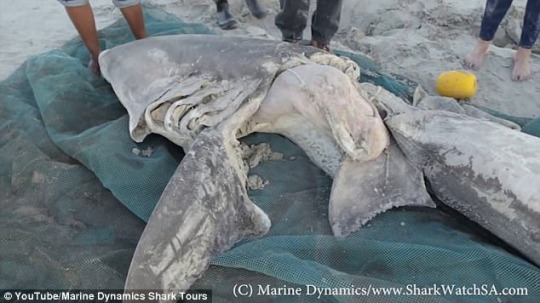
if you've noticed, i've been very harsh on these guys. i actually think they're really cool animals, and the fact that they have the black air force energy to pull this shit radiates big mood imo. they have the 2nd largest brain of any sea creature, only behind the sperm whale. i love these creatures, and would love to see them in their pods in the wild. they also really annoy me tho. i'm sorry but a shark-harassing honey badger dolphin does not deserve to be an apex. ignoring that they're an apex predator, they're at least in my top 15, maybe even top 10. that's why i gave them the honor of being my first creature of the week.
7 notes
·
View notes
Text
Queer Animals
quick wiki read up
Animals that display homosexuality:
Primates- besides humans, many primates are gay. bonobos (fully bisexual), gibbons(rare), gorillas(common), orangutans(rare, observed in males), and even our closest relatives the chimpanzees (mostly male), have been seen (both male and female)
Birds- black swans(polyamory, males), albatross’(mostly female but also male), blue ducks(male), ibises(chemically induced), mallards(male leaves female for male), penguins(mostly male but also female), vultures(male), pigeons(both male and female, infertile eggs), flamingos(same as black swans). most of these species raise chicks together
dolphins- amazon dolphins, bottlenose, dolphins do not care behaviors: sexual, emotional connection. they are technically bisexual because of reproduction.
bison- american bison both males and females
bats- more than 20 species are gay. list: many flying foxes, Rafinesque's big-eared bat, bent-wing bat, serotine, bechstine, long-fingered, daubenton, little brown bat, noctule, leisler, pipistrelle, long-eared, barabastelle, horseshoe, vampire. //more common in males
elephants: sexual behavior, kissing, trunk intertwining, putting trunks in the other’s mouth, form companionships. present in both sexes.
giraffes: necking, caressing, courting, sexual behavior, more commonly to happen with 2 males than heterosexual partnerships.
marmots: species: olympic, hoary. more common in females. behaviors: nuzzling, kissing, sexual behavior
lions: nuzzling, caressing, sexual behavior. both male and female, though only in captivity in females as observed.
polecats: sexual behavior
sheep: 8-10% of rams are exclusively homosexual. behaviors: courting, sexual behavior
spotted hyena: mounting between both (especially female) sexes.
lizards: some whiptail lizard species are only female and reproduce parthenogenicly. they increase reproduction by courting and sexual activity to increase ovulation.
tortoise: oldest tortoise, jonathan is GAY and has been with his partner fredric since 1991!!!
incects: dragon flies (male), fruit flies, bed bugs
others: wallabies, antelopes, sea lions, belugas, bears (lol), deer, foxes, rats, domestic cats, domestic cattle, cheetahs, opossums, shrews, domestic dogs, donkeys, kangaroos, guinea pigs, mongeese, rabbits, elk, whales, goats, gazelle, monkeys, wolves, squirrels, hamsters, marmots, horses, rhinoceros, chipmunks, seals, ruminants in general, hedgehogs (long eared specifically stated on this list 😳 sonic????), martens, mocos, moose, zebra, mice, ox, porcupine, quokka, raccoons, tanukis, tasmanian devil, tigers, hogs,
3 notes
·
View notes
Text
1st Gen TD Contestants' Spirit Animals
Gwen - Common Raven (Corvuc Corax)
Trent - Great Green Macaw (Ara Ambiguus)
Bridgette - Bottlenose Dolphin (Tursiops Truncatus)
Geoff - Green Sea Turtle (Chelonia Mydas)
Duncan - Harpy Eagle (Harpia Harpyja)
Courtney - Snowy Owl (Bubo Scandiacus)
Lindsay - American Flamingo (Phoenicopterus Ruber)
Tyler - Cheetah (Acinonyx Jubatus)
Heather - Black Mamba (Dendroaspis Polylepis)
Noah - Meerkat (Suricata Suricatta)
Cody - Chinstrap Penguin (Pygoscelis Antarcticus)
DJ - African Savanna Elephant (Loxodonta Africana)
Owen - Warthog (Phacochoerus Africanus)
Izzy - Chimpanzee (Pan Troglodytes)
Harold - Giraffe (Giraffa Camelopardalis)
Leshawna - Hippo (Hippopotamus Amphibius)
Beth - Beaver (Castor canadensis)
Justin - Indian Peafowl (Pavo Cristatus)
Katie - Red Panda (Ailurus Fulgens)
Sadie - Giant Panda (Ailuropoda Melanoleuca)
Eva - Wolverine (Gulo Gulo)
Ezekiel - Opossum (Didelphis Marsupialis)
Alejandro - Jaguar (Panthera Onca)
Sierra - Antarctic Fur Seal (Arctocephalus Gazella)
2 notes
·
View notes
Text
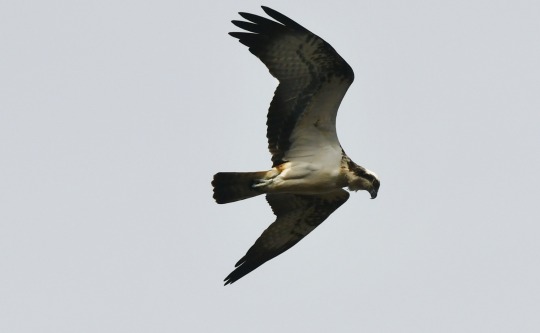
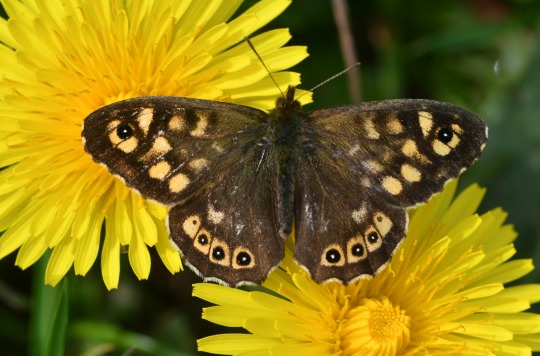
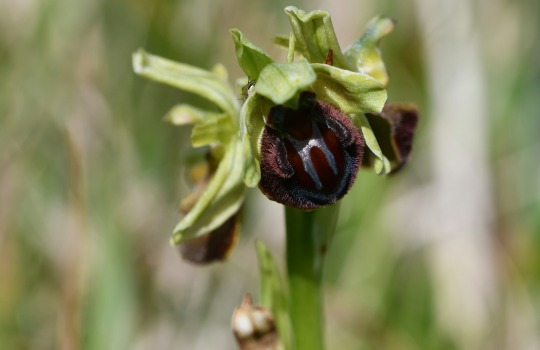
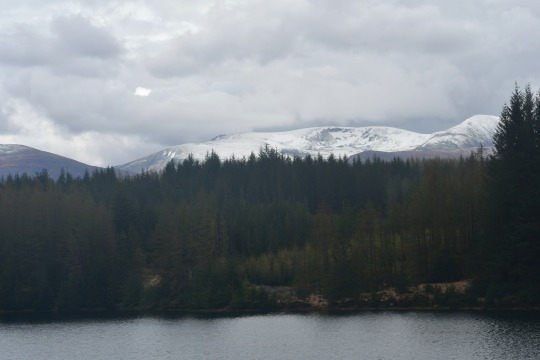
Four of my favourite photos I took in April 2024 and month summary
The photos are of; an Osprey at Lossiemouth in Moray, Speckled Wood on dandelions by Lakeside Country Park in Hampshire, early spider orchid at Durlston in Dorset and view at Laggan Dam.
April was another momentous and splendid wild month for me with so much seen and many amazing places visited. My birdwatching year continued to go from strength to strength with some smashing spring species seen and my year list kept pace with where my others had been at this stage in a year being second only to the number I was on last year my highest ever year list. Spring delights Swallow, House Martin, Wheatear, Whitethroat, glorious Sedge Warbler, Redstart, thrilling views of Guillemot and Fulmar, Little Tern and Common Tern were key species added to my year list this month alongside blockbuster names Osprey and rare Marsh Sandpiper. Avocet, Marsh Harrier, Buzzard, Sand Martin, Goldcrest, Blackcap seen and heard and my first Cuckoos heard this year were other highlights. Following the Lakeside Great Crested Grebes with their four growing chicks and a pair still courting and the new Winchester Peregrine pair was special again this month, as was seeing Greylag goslings and adorable Moorhen chicks at Lakeside. The month ended and the new one began whilst away on the incredible adventure that has been our Scotland holiday; it has been pure, tranquil, joyful and nourishing being out in wilderness areas surrounded and embraced by sensational wildlife both at the amazing cottage we’re staying in and the many fantastic places visited. By the end of April we had already seen many of the standout species of the trip including resplendent summer plumage Black-throated Diver and Red-throated Diver, majestic White-tailed Eagle, exuberant Willow Warblers a very welcome constant, Pink-footed Geese, Red Grouse, Red-legged Partridge, loads of Common Sandpipers, Little Ringed Plover, Knot, Hooded Crow, Kittiwake, amazing views of many Ospreys, Razorbill, Puffin, Common Scoter, Goosander, Goldeneye, Long-tailed Duck, Teal, Wheater, Sand Martin, Yellowhammer, Crossbill, Brambling, White Wagtail, Tree Sparrow, Raven, Skylark, Buzzard, Common Gull, Curlew, Lapwing and Oystercatcher.
It was a massive butterfly month for me too as the peak season moved through the early gears enjoying magical views of Red Admiral, Peacock, Brimstone, Speckled Wood, Small Tortoiseshell, Small White, Orange Tip, Green-veined White, Holly Blue and Wall Brown with many making the most of the wealth of dandelions out the front and at Lakeside. My moth year got going too with White-shouldered House moth at home and bright Brimstone moth at Durlston.
It was a marvellous month of mammals with Hedgehog at home, more Roe Deers in a strong year I’m having for them, Sika Deers on the way to Durlston and Grey Squirrels enjoyed. A massive part of the Scotland trip was exhilarating encounters with mammals, getting some of my best ever views of certain species; inside April this included stunning intimate views of Hares and Roe Deers around the cottage, an amazing moment as a Stoat ran through the garden, a dream encounter watching Bottlenose Dolphins at Spey Bay and Mountain Goats. Bees, spiders, Black and Yellow Cellar slugs and pill woodlouse were other highlights this moth.
Flowers gripped my month of course too as the season really matured with cuckooflower, garlic mustard, wild garlic, early purple orchid, my first ever known sighting of green-winged orchid, early spider orchid, cowslips, bluebells, greater stitchwort, marsh marigold, wood anemone, milkwort, buttercups, lesser celandine, wood anemone, cuckoo-pint, red deadnettle, white deadnettle, yellow archangel, forget-me-not, green alkanet, speedwell and herb-Robert starring alongside the breathtaking dandelion scenes. Vetch, sea and red campion, thrift, hogweed and oxeye daisy (some more than others and largely down to personal perspective) were examples of the cycle of the floral year being slightly ahead again. In Scotland it was interesting to observe spring being slightly behind compared to home with daffodils and primroses still around in numbers among others. It was nice to enjoy the sight of fungi here and there in April including hoof fungus in Scotland.
I enjoyed two great social occasions this month, the Hampshire Ornithological Society’s Member’s Day and a talk from Megan McCubbin based around her book which I thoroughly enjoyed reading earlier in the year. Both were inspirational and eye-opening times where it was great to meet like-minded people something watching the Great Crested Grebes has allowed a lot too. Finally I enjoyed being out and looking out so much in April taking in my surroundings and taking in some wonderful vistas and epic sky scenes. Immersed in the splendour of the vast, open, rugged, mountainous and varied landscape in Scotland also including wetland, coast and forest we enjoyed some incredible and breathtaking views.
#early spider orchid#durlston#dorset#laggan dam#scotland#england#osprey#speckled wood#dandelions#flowers#birdwatching#birding#bird#butterfly#birds#butterflies#great crested grebe#white-tailed eagle#red admiral#2024#april#wildlife#photography#marsh marigold#nature#reflections#europe
13 notes
·
View notes
Note
Not fish questions! 👀
Favourite whale? Favourite dolphin? Favourite sea Slug?
Oooh, exciting! People so seldom ask me about non-fishy friends!
My favourite whale (excluding dolphins) is the sei whale! It’s a really cool whale, it’s one of the fastest baleen whales! It rarely breaches, and instead of showing much of its body on the surface, it sneakily comes to the surface for air and sinks right back into the water. It’s also the third largest whale after the blue whale and fin whale! And a lovely dark grey colour… My favourite dolphins are — pardon me my predictability— bottlenose dolphins and orcas, both are very intelligent species and I had a really really big bottlenose dolphin phase that preceded my ongoing fish obsession. They’re just mega cool with their unique and advanced hunting techniques and their language okay TToTT Orcas even have dialects! And bottlenose dolphins can use tools in various ways. You just can’t help but admire two of evolution’s perfect hydrodynamic design/great intellect/killing machine combos.
Lastly, I haven’t really thought about my favourite sea slug before, but having given it some thought I have to say Atlantic black sea hare! They’re very cool, they can swim via the use of the parapodia attached to their foot and they’re a lovely black in colour! Someone once said that aquatic vampires transform into them instead of bats and yeah, totally agree. I also like sea angels a lot, and overall nudibraches are all so beautiful and vibrant that I’m not sure how I’d ever choose just one of them as a favourite!
#aquatic#asks#anonymous asks#anon#anonymous#can you tell ive been dying to share my non-fish knowledge lmao#alas. fish facts only!
29 notes
·
View notes
Text
Russia’s War Against Ukraine Is Killing Dolphins in the Black Sea
Russia’s ongoing war against Ukraine has destroyed infrastructure and displaced about 5 million people from the country since last spring. The country’s conservationists have also noticed that the war is killing endangered Black Sea dolphins and harbor porpoises. Even Twitter Can’t Kill Twitter | Letter From the Editor Harbor porpoises and bottlenose dolphins have washed up dead on the Black…

View On WordPress
#Bottlenose dolphin#dam#Dolphin#Ecocide#Environment#Environmental justice#Environmental law#Gizmodo#Harbour porpoise#International criminal law#Jojo Mehta#Marine mammal#Pawel Goldin#Porpoise#Putin
1 note
·
View note
Text

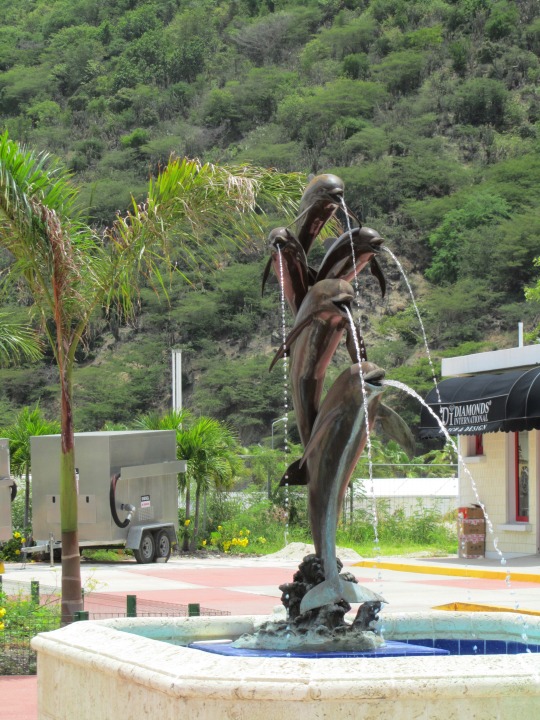
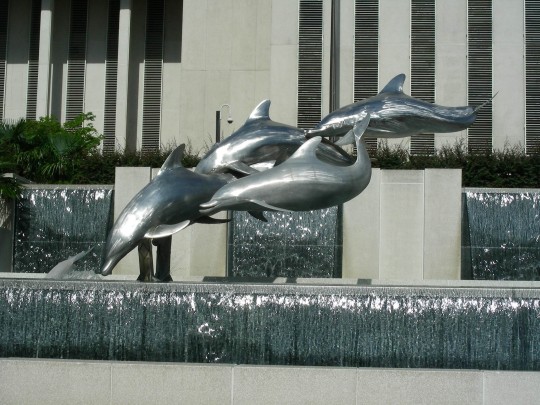


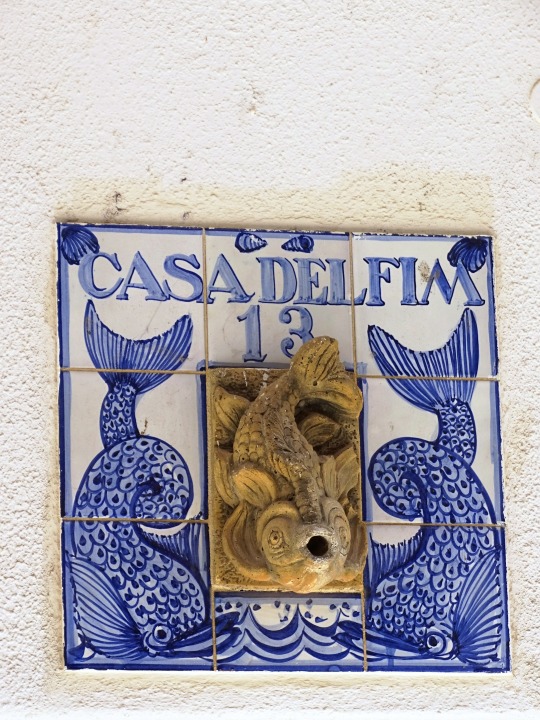

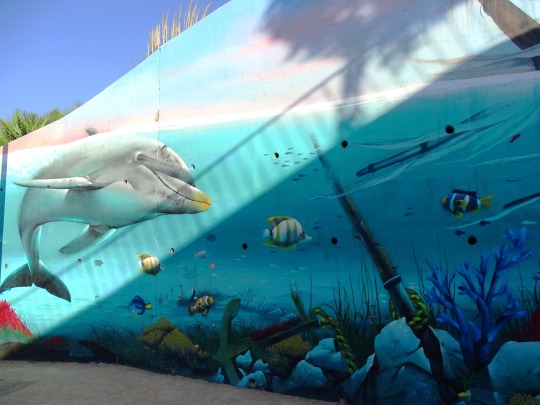



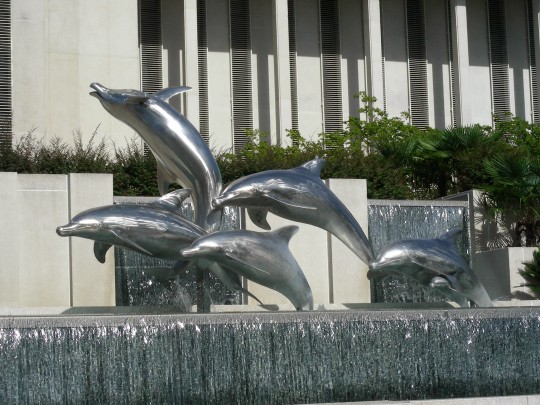
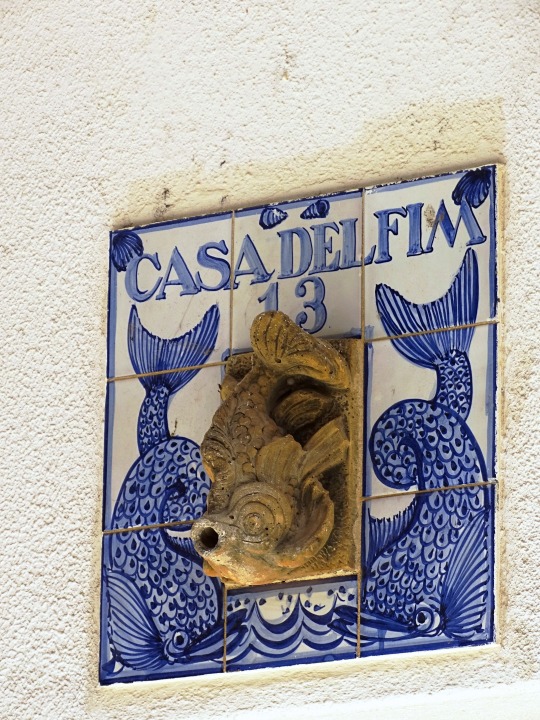

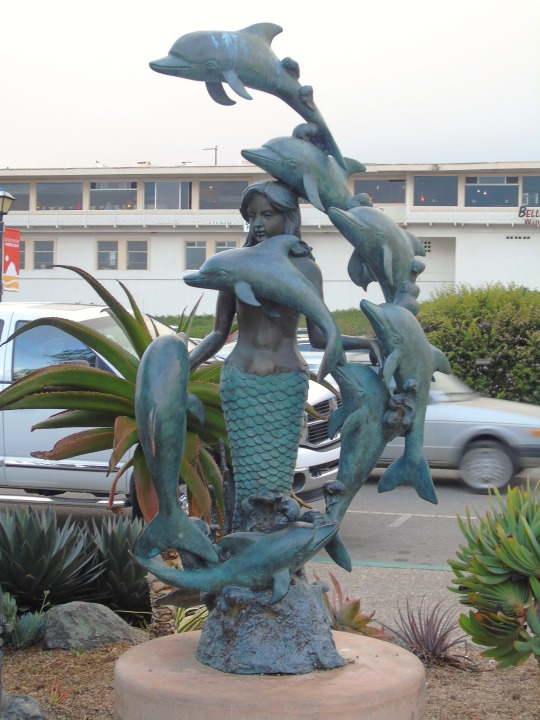
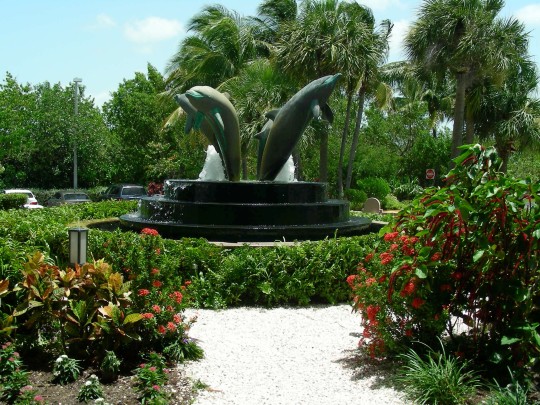
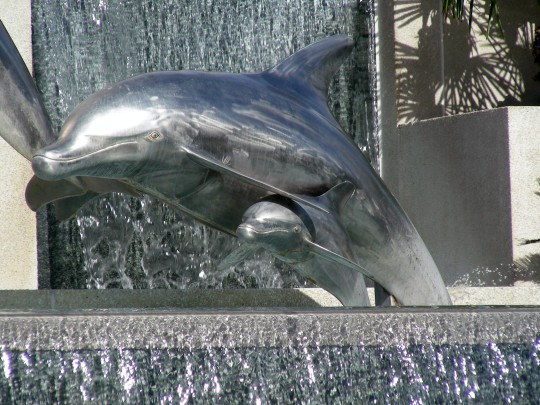


National Dolphin Day
Visit an aquarium or ocean, watch Flipper, or read all about the different species of dolphins to celebrate these smart, fun, and unique marine mammals.
Dolphins warm our hearts when we see them because they always seem like they’re so happy to see us! These energetic, playful porpoises provide not only joy for people but also help protect the marine ecosystem that is our ocean waters.
National Dolphin Day is a day dedicated to dolphins, aimed at educating people about dolphins and how they help protect the oceans.
Learn about National Dolphin Day
National Dolphin Day has been created so that we can all pay tribute to this amazing mammal. Dolphins are incredibly intelligent creatures, as well as being wonderfully sociable. You may have even had the opportunity to swim with dolphins before, and so you will have experienced first-hand just how amazing these creatures are.
Dolphins are related to porpoises and whales. They are cetacean mammals, which can be as small as four-feet in size or as big as 30-feet. This is because there are many different species of dolphins. These mammals also prefer shallower seas, which is why there are plenty of opportunities for us to marvel over their beauty.
If you spend some time reading up on dolphins on National Dolphin Day, we are sure that you will be amazed by some of the information that you find. Did you know that dolphins have an in-built sonar? Dolphins use echolocation to navigate and locate their food. They essentially “see” the sound, as noise bounces off the dolphin’s surroundings and various objects. Bats also have this superpower as well!
There are plenty of other exciting and interesting facts about dolphins. We would recommend spending some time learning more about the different species of dolphins. A lot of people assume that all dolphins look the same, but this is not the case. There are around 40 different dolphins species. Some dolphins are pink, some are white and black, some have no fin on their back whereas others do, and some have no beak! As you can see, there are a lot of differences, and so it is certainly fascinating to learn about the various types of dolphins.
One of our favorite facts about dolphins is that they call each other names! And no; we don’t mean nasty names! Scientists have discovered that dolphins refer to each other by a given name.
History of National Dolphin Day
Listed under the AVMA’s Pet Health Awareness Events, National Dolphin Day celebrates the beauty of dolphins. Dolphins exist at the top of the food chain and provide a balance to the marine environment.
They give marine biologists a good look into the current health of the ocean. There are over 40 species of dolphins out there in the wild. Dolphins are highly intelligent mammals that are part of the toothed whale family, which also includes orcas and pilot whales.
Dolphins give birth tail first, have built-in sonar, and use their blubber as a heating and cooling system for their bodies. While the most famous dolphin is the bottlenose dolphin, there are also dolphins that live in freshwater, such as the Amazon river dolphin.
Others include the Ganges river dolphin, and Indus river dolphin, all of which primarily reside in the rivers of the region’s forests. Dolphins also have one of the most complex languages in the animal kingdom. Dolphins have even been known to refer to others by a given name.
National Dolphin Day celebrates the uniqueness of these porpoise creatures out in the ecosystem. It aims to educate people about the behavior of dolphins and spread the love for these joyful creatures. Whether you’re on vacation in the tropics or are visiting an oceanarium, this is the time to head over to the dolphins and say hi.
These creatures can help provide a better understanding of humans. Though they exhibit different behaviors and look hugely different, they remind us of our social, friendly behavior they exhibit.
How to celebrate National Dolphin Day
Celebrate this day by learning more about these fantastic creatures. Take the time to learn the difference between each species and make a comparison. If you know someone or are someone who loves dolphins, host a dolphin themed party.
Buy yourself or your friend a dolphin stuffie and save enough money to go on a vacation trip out to the ocean. Once there you can enjoy these creatures in person. Share this holiday with your friends and family and support your nonprofit organization to help keep these creatures and the marine ecosystem alive.
If you can afford to, it would be great to adopt a dolphin on National Dolphin Day. It is extremely sad to learn about the thousands of bottlenose dolphins that die each year because they accidentally drown in fishing nets. Adopting a dolphin can make a massive difference, as it enables the WWF to do more work to keep dolphins safe. This includes funding projects and working with fishing fleets so that sustainable use of the sea is promoted. When you adopt a dolphin, you will get a fact pack, as well as an adorable dolphin soft toy. You also receive a personalized adoption certificate, as well as regular updates.
You can also spend National Dolphin Day spreading awareness about these amazing creatures. Take to social media and share some dolphin photos, as well as some interesting facts about these mammals. You can encourage your followers, friends, and family members to adopt a dolphin as well. Plus, we can all do our bit to help protect the oceans. The main step that we need to take as a society is to stop using single-use plastics. You could also honor National Dolphin Day by joining a community or beach clean up?
Source
#The Pod by Rick Switzer#Vancouver#Canada#Casa Delfim#Albufeira#Portugal#National Dolphin Day#NationalDolphinDay#14 April#sculpture#original photography#travel#vacation#landmark#tourist attraction#Trelleborg#Sweden#architecture#cityscape#USA#Manhattan#New York City#fountain#Monterey#Philipsburg#Sint Maarten#Key West#Florida Heritage Fountain#Tallahassee#Florida
0 notes
Photo









Travel sketches, part 4/4.
#artblr#colour pencil#sketch#african wildlife#black tipped mongoose#mongoose#fish#yellow boxfish#tall fin batfish#batfish#tropical house gecko#gecko#lizard#red colubus monkey#monkey#bottlenose dolphin#dolphin#hawksbill sea turtle#sea turtle#turtle#helmeted guineafowl#guineafowl#common crane#crane
6 notes
·
View notes